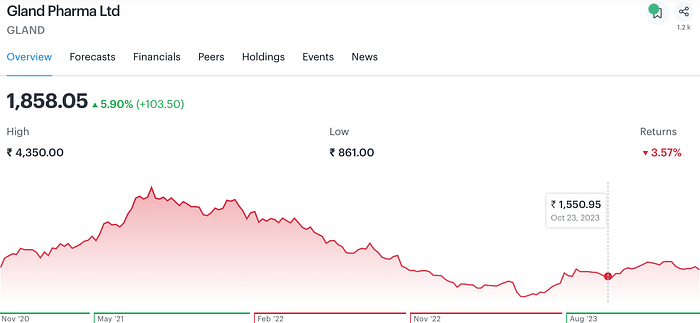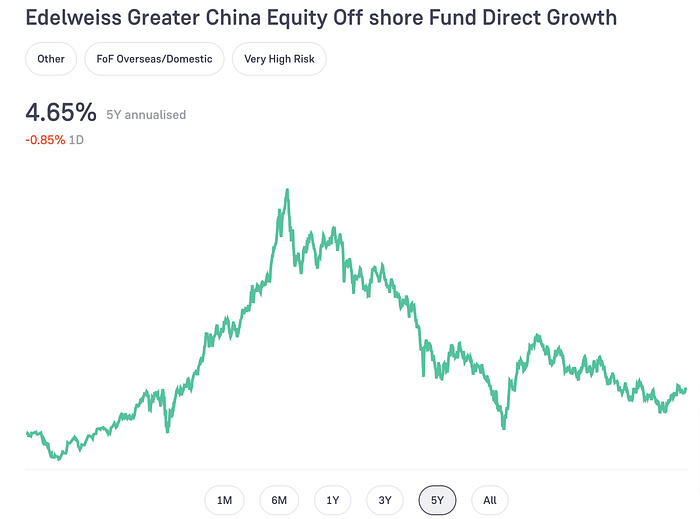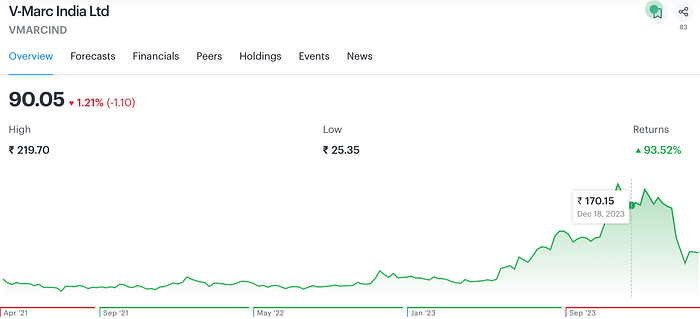What is the fuss?
At some point in your life, you attempt to invest in stocks. News of people doubling their money and examples of wealthy people on the World’s Top 100 Richest list inspire you.
So, you take the plunge, trying it out and learning the ropes as you go. You uncover deeper investing truths as you evolve from a newbie to an intermediate/advanced level. Some of these truths debunk the myths you might have heard when beginning to invest.
Myths are born because they are easy to implement, cool to say, or rank high on sharable and memorable content. No matter the reason behind the creation of myths, the more important part is being aware of them.
I, for one, believed in many investment myths as they made sense on the surface. Until real investing experience taught me otherwise.
In this post, I share the ten most common myths about stock investing that I have encountered in my investment journey. If you are starting to invest, this list should help you become aware of them. If you have been investing for a while, it’s always good to reinforce basics and explore yet-to-uncover myths.
Let’s get started.
Myth 1: Stock Price at All-Time High, time to book profit
Another version is that the stock price is at an all-time high (ATH); how much higher can it go?
A stock price can rise as high as the market allows. If the price movement is supported by earnings growth and a deepening moat, it might rise further.
“A stock is at an all-time high price; how much higher can it go?” isn’t the right question. The right question is, is the rise in stock price justified? If it is, then staying invested makes sense. If it isn’t, then booking profit (selling the stock) makes sense.
Let’s look at an example. Titan is one of India’s largest and trusted lifestyle companies. Its products range from jewellery to eyewear and watches. Titan’s stock price increased from INR 790 in Oct 2018 to INR 1,140 in March 2019, a whopping 45% in less than six months. It was at an all-time high price in March 2019, but should one have sold?
Well, Titan’s stock price continued rising to INR 1,330 in June 2019, another 16% increase from March 2019 prices.

Titan has been diversifying and increasing its moat over time. From consistently increasing its physical stores to diversifying to eCommerce channels and new product portfolios to expanding outside India to reach Dubai and the USA. Titan is a good example of a consistent compounder, increasing its earnings year over year.
I understood this myth myself in 2023 when I was tracking Titan stock. Titan has just hit another all-time high of INR 3,000 in June 2023. I thought, how much higher can it go? Let’s wait for it to fall. In January 2024, it hit another all-time high of INR 3,880, a 30% increase from its June 2023 price in just six months.
I am still waiting to build a position in Titan. I have learned my lesson.
So, how should investors act to avoid the all-time high myth? In my view, the starting point is identifying good stocks to invest in. Once you have conviction in the stock, stock price movement has less of a role to play.
The second point is to do an SIP or systematically invest in a fundamentally strong stock at regular intervals, say monthly.
SIP takes out the guessing work in when to invest and at what price. It averages out the expensive and discounted valuations of the stock over time.
As no one, really no one, can guess the highest and lowest price a stock can hit, SIP is a chilled-out way to invest and become a patient investor.
Myth 2: Stock Price at an All-Time Low, time to buy
Another version is “The stock price is at an All-Time Low (ATL); how much lower can it go?”
A company’s stock price can go to zero. Stock price mimics a company’s performance and future growth potential.
A company with weak fundamentals, poorly run, and bleak future growth prospects should be avoided, irrespective of how low its traded price is.
Peter Lynch, one of the best fund managers of our time, explained that in the stock market, it is not only dark just before dawn, but it’s also dark before pitch black. By pitch black, he meant the stock price hitting the zero value mark.

I learned this lesson the hard way when investing in Gland Pharma. I have been tracking Gland Pharma since 2021. In October 2022, Gland Pharma fell to its all-time low of INR 1,800, with its all-time high being INR 4,300 just one year back. I wondered how much further the stock price of a large-cap would fall. I invested.
Gland Pharma’s price fell for the next year to its lowest of INR 860 before recovering. I did not wait for the entire downward stroll and cut my losses earlier. Lesson learned.

Returning to Investing 101 and researching the reason for price movement will help you build conviction to invest or sit on the sidelines. Cutting losses quickly is better than praying for a stock that is down and out to give you profits in a hopeful future.
A quick thumb rule is to check if the entire stock market or industry in which the stock belongs is falling. Falling with the entire market or with the industry is understandable. However, if a stock is falling alone, then it signals worry, which should be dug into and researched well.
Myth 3: It’s a large company that can’t grow further.
New investors and retail investors are looking for small companies that can quickly become big. The underlying assumption is that a small company becoming big will give large returns. The second assumption is that a small company has headroom for growth compared to a large company that might have hit its ceiling.
Well, both assumptions need a check and aren’t always right. A large company might have achieved economies of scale. Hence, its costs are low, it has higher bargaining power with its suppliers, and it can fend off competition better than the smaller companies.
The second assumption is also not true in all cases. Take Titan as an example, which I discussed in myth one above. Titan has constantly expanded its Total Addressable Market (TAM), from jewellery to eyewear, watches, eCommerce (Caratlane), and international expansion.
Reliance is another good example, that has expanded from being just an oil to chemical (O2C) conglomerate to everything from fashion, FMCG, Telecomm, eCommerce and Green Energy.

I, for one, love large companies. Not only are they less volatile than smaller companies, but they also grow consistently and expand their horizons.
As investors, we should check whether the company is building a strong future growth trajectory through mergers and acquisitions, R&D, or expanding geographical reach. If one or more checkboxes in the above three criteria are checked, then hold on to this large, slow-moving behemoth. You will be rewarded well over time.
Myth 4: Past Returns = Future Returns
I always sigh when reading this myth. I have been a victim time and again. Past returns are not an indicator of future returns.
It is typical for an investor to do a Google search for “Best Performing Mutual Funds,” “Top Stocks to Invest in 2024,” etc. The answer in these results often considers past returns from a stock or a mutual fund.
It’s also called recency bias. It assumes that the returns in recent years will also be mimicked in the coming years. But things only get clearer in hindsight.
In 2020, the Chinese stock market was the first and the fastest to rebound. It rallied 120% in less than a year (a reference to the JP Morgan Greater China Fund NAV movement) from March 2020 to February 2021. Other countries’ stock markets were also rebounding.
Under the guise of diversifying into a different country, I invested in a fund (Edelweiss Greater China Equity Offshore Fund). Three years later, as it turns out, this fund is still in a loss, now at a -13% CAGR for the past three years as of 2024.

I thought that if a China fund has given more than 100% returns in the past year, it might give at least half of that, a 50% return, in the next year, which would be good enough. I was so wrong.
If a stock or fund has run up too high too soon, it’s a sure-shot sign to stay away. A stock that rises fast also falls faster. Gains from slow, consistent growth are what investors get to keep.
I sold off all of my China Fund of Fund in late 2022 to cut my losses further. But what can retail investors like us do when we cannot predict future returns from past returns?
Well, we can do two things. First, past returns over 5+ years show how a company has performed. Note that the past time horizon is 5+ years, not just the past year. The past year can be euphoric, but that can average out in the next year by zero to negative returns.
A healthy sign is a consistent, gradual, and steady growth in earnings, profits, and stock price over the past 5+ years. Put such stocks on your watchlist.
However, a stock that has been vastly volatile, giving 50–60% returns in one year and 40–50% losses in another year, should be avoided and researched more.
Second, research on the company’s industry, its management, and its future growth strategy. If this fundamental analysis makes sense and is supported by review notes by stock market analysts, then consider investing in such stocks.
Ultimately, a long-term investment horizon will make you research harder, and look deeper into a company than just the past year returns.
Myth 5: The price target of this stock says 20% upside. Let’s buy.
Most mutual fund and stock research companies publish price targets for stocks every quarter or so. These reports play a huge role in the stock price movement.
These fund houses and research companies have smart analysts who do the research, play with algorithms, and get to read paid and hard-to-access industry reports. Hence, their price target reports are sought after and believed to predict the stock’s future price movement.

This is where the usefulness of these reports ends. While commentary on the company’s performance, the pros and cons of investing in a company are useful. Price targets in these reports are just an indicator at a point in time.
If someone knew the exact price of a stock one year from now, every stock-market participant would follow these price targets and get rich. Even the ones publishing these price targets will be rich. But that is not the case. So what’s missing?
Well, there are a lot of unknowns. A stock price is influenced by industry changes, technological innovation, political stability, global economics, and natural calamities. As if this were not enough, a stock price is often impacted by the execution capabilities of its management, threats from competitors, and ever-changing customer demand and preferences.
As you see above, there are many unknowns, not all of which can be known in advance. No one can accurately predict an earthquake, a pandemic, a war, or a change in customers’ tastes.
Hence, price targets are often not met. Either they are overshot, or they underdeliver. Blindly following price target reports makes no sense. One can use these reports to increase one’s knowledge of a company and the industry and complement one’s stock research process.
Myth 6: Penny Stock will become a Multibagger.
Multibagger stocks are a dream for many retail investors. Media stories of how one stock made fortunes for a rich investor fuel such dreams. Be it Titan for the late star investor Mr Rakesh Jhunjhunwala or Coca-Cola, Amex, and Apple for Warren Buffet. The media does a good job of exemplifying how $1 in these companies became $1,000 after two decades.
But what retail investors do is start finding penny stocks aggressively, which are trading at under INR 100/-. They form a hope-based belief that these penny stock companies will double, triple, quadruple, and generate multi-bagger returns in no time. Similar to the star investors they have read so much about.
But this isn’t true of every penny stock. Not every $1 stock will become a $1,000 stock. Most of these stocks will cease to exist in the next decade, and only a handful will survive.
If every penny stock were a multibagger opportunity, there wouldn’t be any penny stocks left. All penny stocks would have been heavily bought into, growing by leaps and bounds every passing day.
There is a reason why a penny stock is trading at a low price. And there is a reason why there are a few select stories of star investors making huge amounts of money from investing in 1–2 stocks over decades. Understanding these reasons is important.
One such penny stock is V-Marc India, an electrical component manufacturer based in Haridwar, India. In 2021, I was looking for “potential” multibaggers. Social media fuelled my curiosity and guided me to V-Marc as a high-potential, undervalued stock.

I invested in V-March’s IPO at INR 40/-. The stock price kept falling to INR 25/- till July 2021 and then rose to INR 200/- in Nov 2023 before falling again to INR 90/- levels in May 2024.
Well, I was not part of V-Marc’s rise and fall journey. I exited in late 2021 at a minor profit at a stock price of INR 50/-. I could not understand the stock’s fall and rise. Further, I started receiving phone calls to invest more in V-Marc, which sounded alarming as I had never revealed my identity as an investor in this company.
So, how does one tackle this myth? Well, be extra careful of penny stocks. And return to investment basics when evaluating a stock. Being a penny stock is never a good reason to invest. Good reasons are fundamental strength, good management, and the strong moats a company builds over time.
Myth 7: Stock will regain its All-Time High (ATH) price
Many investors invest based on a percentage drop in stock price from its all-time high price. Reason? The stock price will return to its all-time high, giving good returns.
The assumption that a stock can return to its once-achieved all-time high price is flawed. Just because a stock’s price has been there once does not mean it will be there again soon. It can actually never get up there.
I have used this myth unconsciously while deciding on the buy price of a stock. Only to realise later that the true valuation of the stock is much lower, resulting in a further price drop.
As the investing wisdom goes, the stock market is a voting machine in the short term, but in the long run, it’s a weighing machine. In the short term, stock price is decided by the demand and supply of shares. A higher demand can lead to a higher price, not necessarily a higher value of the company behind the stock.
In the long term, the fundamentals catch up, and the stock gets fairly priced.
Brightcom Group is a recent example. It touched its all-time high of INR 123/—during the post-COVID stock market bull run. Since the ATH hit in December 2021, the stock price has fallen and never attained its ATH value in 2.5 years. It is trading at INR 19/ — as of May 2024.

How do investors avoid this myth? Well, by avoiding it altogether. Yes, remove all-time high prices from your stock evaluation criteria. The price of a stock is an outcome. Stock research focuses on inputs that can bring about a positive outcome, an increase in stock price.
Myth 8: Star Investor has invested; let’s invest in this stock, too.
Star investors are the top wealthy investors in the stock market world. Stock media groups often interview them. Many new investors look up to them, and seasoned investors seek their opinions. So much so that stock screener sites and apps have a separate section tracking stocks invested in by these star investors.

The underlying assumption is that these star investors have a golden touch. Any stock they touch (invest into) will grow multifold, giving high returns to all its investors. After all, that is how these star investors got rich in the first place, right?
Well, not quite. First, there is a delay in the news—at least a quarter. A stock’s shareholder breakdown is usually revealed at the end of every quarter. So, if an investor invested at the beginning of the quarter, you would only know at the quarter’s end.
Second, a star investor can exit while retail investors are still busy buying. Star investors have a framework of buy, hold, and sell. While retail investors read the news and start buying, the star investor may already be selling and exiting.
Third, star investors have a core portfolio that accounts for most of their wealth. With this stable wealth, they have the capability to take risks. They might not be impacted even if their smaller investments in a couple of “trial” stocks get wiped out. However, retail investors might be impacted if that happens.
Studying stocks invested in by star investors is okay. Learn from their stock-picking process. Know if their buy-and-sell framework works for you. However, replicating their buying decisions by rushing into it will not help.
Every star investor has a different risk-taking ability, which changes over time. As retail investors, we should understand our own risk-taking ability and then decide on our buy-and-sell framework and stick to it.
Myth 9: The PE of this stock is low; it is cheap, so let’s buy.
Every new investor falls for this one. And every seasoned investor relearns this again at some point in their investing journey.
And it’s not all their fault. Price to Earnings (PE) multiple has been overused. It is not the right indicator most of the time.
PE multiple is easily available, easy to read and use, and easier to track. However, this easy metric is harder to apply in different investing situations.
An example is metal stocks. Usually, metal stocks are bought when their PE is the highest or, as per PE, the most expensive. This happens due to demand and supply, which is best explained in this LinkedIn post here.
Low PE does not necessarily mean low valuation and high PE does not necessarily mean high valuation. PE is a ratio of Price to Earnings.
Earnings are often a lagging indicator. This means that future earnings growth may make investors buy a high PE stock now, as the denominator (earnings) will catch up in due time.
Myth 10: This time, it will be different!
Keeping the best for last. At some point, each investor thinks that this time will be different. Only, it isn’t.
As Warren Buffet aptly puts it:

You might have been investing for two years now and think you know the investing game. Probably, you don’t know all of it.
You have been a good person, offering your prayers regularly and helping others. Now, you might think your good deeds will return to you in the form of stock returns. Probably not.
You have done 10+ hours of research and sacrificed weekend parties and vacations to make notes and study market trends. You are sure a trend will play out, and the price of your picked stock will rise. Maybe not.
You have studied all bull and bear cycles for the past 20 years, but you think this cycle will differ based on the political situation and industry tailwinds. Maybe, or maybe not.
“This time it will be different” is delusional hope at its best.
The stock market is a place where human emotions overpower facts and trends.
The patient, intelligent investor knows how to be unemotional to make the most of the stock market variations. Those who are not, pay the price of learning, sometimes relearning the same thing many times over.
Investment decisions that are driven by fundamental analysis, knowing your circle of competence, with long-term compounding in mind, is a good way to invest and make money.
Thinking the stock market will behave differently for you is like treating it like a casino, a place of luck.
The only problem is, once you start treating the stock market like a casino, it might as well start behaving like a casino. And in a casino, no matter how smart the players are, the house always wins.
Parting Thoughts
As you continue your stock investment journey, you might encounter more myths you once thought were investment mantras.
Self-experience is a great teacher. Learning from others’ mistakes complements your learning, and you can avoid making mistakes and paying the price of learning later.
Which is an investing myth you uncovered during your investing journey? Do share in the comments below.




